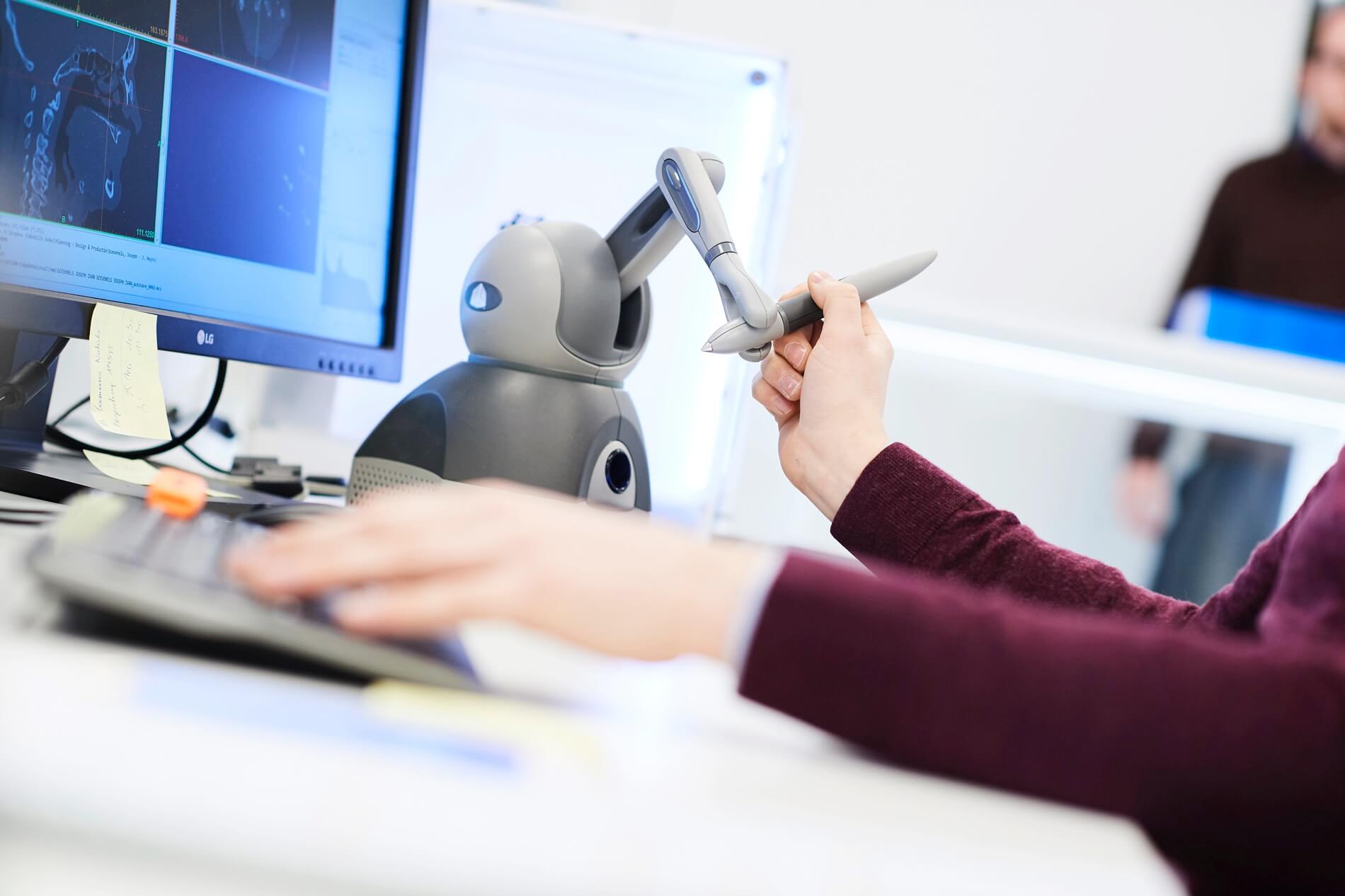Design
To design implants, rapid prototype models can be derived from Digital Imaging and Communications in Medicine (DICOM) data obtained from the patient’s computed tomography (CT/CBCT) scan.

To design implants, 3D images are derived from DICOM data obtained from the patient’s CT/CBCT scan. When uploading the dataset, the surgeon provides additional information about the case and the desired shape, using designated online forms, video call, encrypted uploads or telephone communication. When the scans are securely uploaded via the website, the data set is used to design a rough image of the implant, if applicable by mirroring structures from the unaffected side.
The implant is created following the surgeon’s indications as stated online and making use of graphics tools. A dynamic communication between designers and surgeon guarantees that the preferences of the surgeon are respected before the final design is presented and approved via the website. The virtual design can be subjected to Finite Element Analysis before going into production. Simulation of the forces acting on the implant ascertain that the implant meets the technical standards that are set out. The behaviour of the implant in its actual environment is predicted.
After production, the implant is optically scanned and the point cloud compared to the STL file to assure that the manufactured implant has the same dimensions as the 3D designed implant, with a tolerance dictated by the clinical needs.
